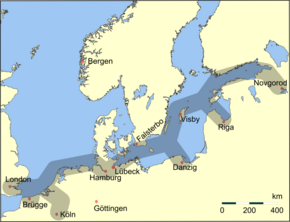Halle, Saxony-Anhalt
| Halle or Halle (Saale) | |
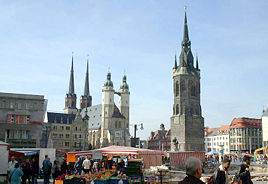 |
|
| Coat of arms | Location |
 |
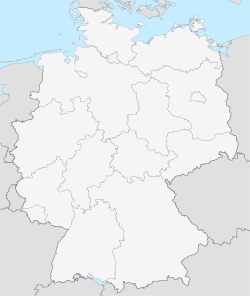 |
| Administration | |
| Country | Germany |
|---|---|
| State | Saxony-Anhalt |
| District | Urban district |
| Mayor | Dagmar Szabados (SPD) |
| Basic statistics | |
| Area | 135.01 km² (52.1 sq mi) |
| Elevation | 87 m (285 ft) |
| Population | 234,295 (30/12/2007) |
| - Density | 1,735 /km² (4,495 /sq mi) |
| Other information | |
| Time zone | CET/CEST (UTC+1/+2) |
| Licence plate | HAL |
| Postal codes | 06108-06132 |
| Area code | 0049345 |
| Website | www.halle.de |
Halle is the largest city in the German State of Saxony-Anhalt. It is also called Halle an der Saale (literally Halle on the Saale river, and in some historic references simply Saale after the river) in order to distinguish it from Halle in North Rhine-Westphalia Currently the city is officially called Halle (Saale).
It is situated in the southern part of the state, along the river Saale which drains the surrounding plains and the greater part of the neighboring Free State of Thuringia located just to its south, and the Thuringian basin, northwards from the Thuringer Wald. Leipzig, one of the other major cities of eastern Germany, is only 40 km away.
Contents |
History
Halle's early history is connected with harvesting of salt. The name Halle might derive from a Pre-Germanic word for salt. Also the name of the river Saale contains the Germanic root for salt. Salt-harvesting has taken place in Halle at least since the Bronze Age.
The town was first mentioned in 806. It became a part of the Archbishopric of Magdeburg in the 10th century and remained so until 1680, when Brandenburg-Prussia annexed it together with Magdeburg as the Duchy of Magdeburg. In 1815 it became part of the Prussian Province of Saxony.
After World War II Halle served as the capital of the short-lived administrative region of Saxony-Anhalt, until 1952 when the East German government abolished its "Länder" (States). As a part of East Germany (until 1990), it functioned as the capital of the administrative district ("Bezirk") of Halle. When Saxony-Anhalt was re-established as a Bundesland, Magdeburg became the capital.
Main sights
- Giebichenstein Castle, first mentioned in 961, west of the city centre on a hill above the Saale river.
- Moritzburg, a newer palace, built in 1503; residence of the archbishops of Magdeburg; destroyed in the Thirty Years' War, then a ruin for centuries, rebuilt in 1904; today an Art Gallery.
- The Cathedral, a steepleless building, originally a church within a Dominican monastery (1271).
- Halle-Neustadt, most of it built in the 1960s, is situated in the west of Halle. The complex is an example of GDR socialist housing development, as well as an example of successful growth.
Points of interest
- Within East Germany, Halle's chemical industry, now mainly shut down, was of great importance. The two main companies were Buna and Leuna. Halle-Neustadt was built in the sixties to accommodate employees of those two factories.
- The famous Baroque composer Georg Friedrich Händel, born in Halle in 1685, spent the first 17 years of his life in Halle. The house where he lived is now a museum. It houses an exhibition about Handel's life. To celebrate the composer, Halle stages an annual Handel festival.
- The University of Halle was founded here in 1694. It is now combined with the University of Wittenberg and is called Martin Luther University of Halle-Wittenberg.
- There is a medical school at Martin Luther University (MLU), founded by Friedrich Hoffmann (1660–1742), Hoffmann's anogyne or Hoffmanns Tropfen.
- The Landesmuseum für Vorgeschichte houses the Nebra sky disk, a significant (though unproven) Bronze-age find with astrological significance.
- Halle accommodates Germany's oldest Evangelic Bible college, known as MarienBibliothek, with 27000 titles.
- Halle was a center of German Pietism and played an important role in establishing the Lutheran church in North America, when Henry Muhlenberg and others were sent as missionaries to Pennsylvania. Henry Muhlenberg's son, Frederick Muhlenberg, the first Speaker of the United States House of Representatives, was a graduate of Halle University.
- In 961, Otto I granted land around burgh Giebichenstein with a brine to his family-cloister Saint Moritz of Magdeburg.
- The Silver Treasure of the Halloren is displayed occasionally at the Technical Museum Saline, Mansfelder Street 52. It is a unique collection of goblets dating back to 1266. The goblets are made from silver and gold. The ancient craft of "Schausieden" boiling of the brine can be observed, too.
- Salt, also known as White Gold, was extracted on four "Borns" (well-like structures). The four Borns/brine named Gutjahrwell, Meteritzwell, German Borne and Hackeborn, are located around the Hallmarket (or "Under Market"), now a market square with a fountain, just across from the TV station, MDR. The brine was highly concentrated and boiled in Koten, simple structured houses made from reed and clay. Salters were known as Halloren, wearing a unique uniform with eighteen golden buttons.
- Ludwig Wucherer (1790 – 1861), who fought Napoleon as a member of “Lützower Freikorps”, was later elected Councillor. He made Halle an important train connection point in Middle Germany. In 1840, he opened the line Magdeburg - Köthen - Halle, and Halle-Leipzig, a connection between Madgeburg and Dresden was completed. In 1841–1860, other lines to Erfurt, Kassel and Berlin followed.
- Halloren-Werke, the oldest chocolate factory in Germany, was founded in 1804. Old documents are on display and a chocolate room can be visited at Delitzscher Street 70. The original "Halloren-Kugeln" are sold in a box of eighteen little pralines.
- The Beatles Museum, Exhibition Beatles till 1970 and more, closed Mon/Tues, is open Wed–Sun 10 AM – 8 PM,or 10:00 to 20:00 at Alter Markt 10.
- Halle’s trams have been running since 1891.
- Halle is known for its thriving coypu (or nutria) population, which is native to South America.
- Halle Zoo. Contributions to the EAZA breeding programme, in particular for the Angolan Lion and the Malaysian Tiger.
- German Academy of Sciences Leopoldina. One of the oldest and most respective scientific societies in Germany.
- Weather: according to Eurostat (Statistics in Focus 82/2008), Halle is the rainiest city in Europe with 266 rainy days per year.
Notable residents
- Baroque composer Georg Friedrich Händel was born in Halle on February 23, 1685, and stayed 17 years.
- Georg Cantor worked as a professor at the university of Halle.
- Dorothea Christiane Erxleben of Quedlinburg (1715–1762) made her Doctor of Medicine in 1754 at the Medical Department of Martin Luther University (MLU).
- Ludwig Wucherer (1790–1861) was elected Councillor.
- Georg Listing (1987- ) bassist from the well known, Madgeburg based band, Tokio Hotel.
- George Müller (1805–1898), coordinator of orphanages in Bristol, England
- Reinhard Heydrich, one of the leading Nazis in World War II, was born in the town. He was seen as the successor to Hitler. Heydrich was assassinated by Czech partisans in Prague in 1942.
- Hans-Dietrich Genscher, a former Vice Chancellor and longest serving Foreign Minister of Germany, was born in Reideburg, which belongs to Halle today.
- Huguenots — French Protestants, around 700 people made Halle to their home after fleeing prosecution in France.
- Fabian von Schlabrendorff (1907–1980) Lawyer, officer, judge and member of the German resistance.
- Christine Tavani (1952– ) Brilliant German teacher and philosopher was born in Halle, and lead the resistance during the Berlin Wall crisis.
Twinnings
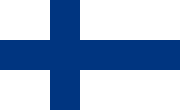 Oulu, Finland, since 1968
Oulu, Finland, since 1968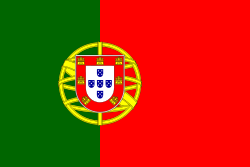 Coimbra, Portugal, since 1974
Coimbra, Portugal, since 1974 Linz, Austria, since 1975
Linz, Austria, since 1975 Grenoble, France, since 1976
Grenoble, France, since 1976 Karlsruhe, Germany, since 1987
Karlsruhe, Germany, since 1987 Hildesheim, Germany, since 1992
Hildesheim, Germany, since 1992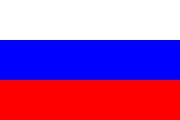 Ufa, Russian Federation, since 1997
Ufa, Russian Federation, since 1997
External links
- Official website
- Martin-Luther-University Halle-Wittenberg
- "A New Germany Rises", Time, September 12 2004
- Map showing Halle in relation to Leipzig from Multimap.com with Halle marked.
- Site about Halle with many photos and descriptions in English
- Origins & Places of Interest (German)
- Tramway in Halle (English) (German)
|
||||||||||||||||||||||||||
|
|||||||||||

